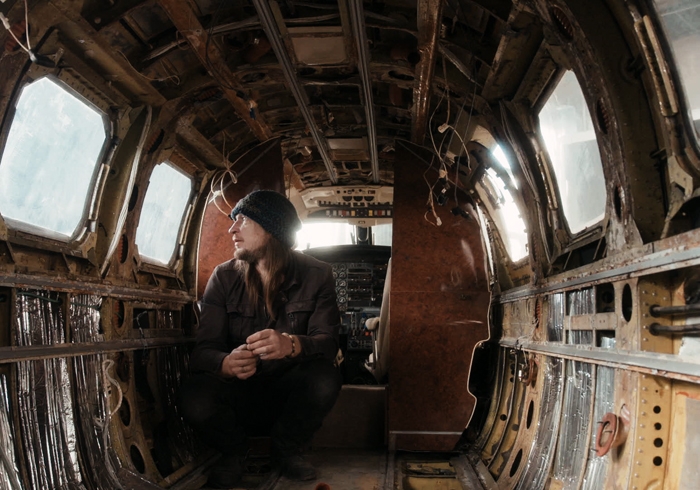ArtReview sent a questionnaire to artists exhibiting in the various national pavilions of the 2019 Venice Biennale, the responses to which will be published daily in the lead-up to the Venice Biennale opening on 11 May.
Roman Stańczak is representing Poland. The pavilion is in the Giardini.
What can you tell us about your exhibition plans for Venice?
I’ve created Flight, a sculpture that I have wanted to make since the 1990s, when I began turning ordinary objects, such as a kettle, inside out to create my sculptural pieces. Nearly 30 years later I’m using this method in confrontation with a real aircraft – something I’ve always wanted to do because flying connects with many episodes both in my private history and in the history of modern societies. An emblematic figure of modernity, it stands for me as a symbol of the communal act of entrusting your life to technology and relying on the promise of safety that it offers. A promise that is not always kept. So by reversing the familiar order of things I want to disturb people’s sense of safety and thus open them up to a spiritual experience. To take them to the other side.
What does it mean to ‘represent’ your country? Do you find it an honour or is it problematic?
It comes as an honour as I feel responsible as an artist for my community and seek to convey its condition in my works, to explain the reality that surrounds me. But the way I do it reflects my own, individual and personal, take on that reality. So the problematic part is whether genuine understanding can be established. Whether the elusive spirit can be found and maintained that always escapes us. I surely hope so. For me, turning things inside out is about hope.
Is your work transnational or rooted in the local?
Flight grows out of a number of my personal experiences and what my local and national community has gone through in the last decades. So the local roots are clearly there. At the same time, the spiritual and existential underpinning of my work lends it a more universal and transnational dimension. I want to offer a prism through which to look at global problems, their local incarnations and the interconnections between the two.
How does having a pavilion in Venice make a difference to the art scene in your home country?
It’s a great opportunity to get a major art project going. To do something you’ve always wanted to do but the required resources were beyond your reach. Just like my inside-out aircraft at the Polish Pavilion.
If you’ve been to the biennale before, what’s your earliest or best memory from Venice?
It’s not exactly about the Biennale, but I remember that as a teenager at the art school I painted a lot of Venetian motifs: gondoliers, the buildings, the lagoon, water. It was a form of escape from grim reality.
You’ll no doubt be very busy, but what else are you looking forward to seeing?
I’m planning to look for a painting by Bartolomeo Veneziano that connects with a story from my life and with me being here this year. After the news came that I would exhibit here at the Polish Pavilion, I told my girlfriend about it. She’d been travelling and brought some postcards. I started looking at them and saw that Veneziano painting. It turned out she bought that postcard at exactly the same time when I received the news that my project had been chosen for the Polish Pavilion at Venice Biennale. I thought to myself that I’d start looking for that painting, and as I search I may come across a myriad of other things.
The Venice Biennale runs 11 May – 24 November 2019
